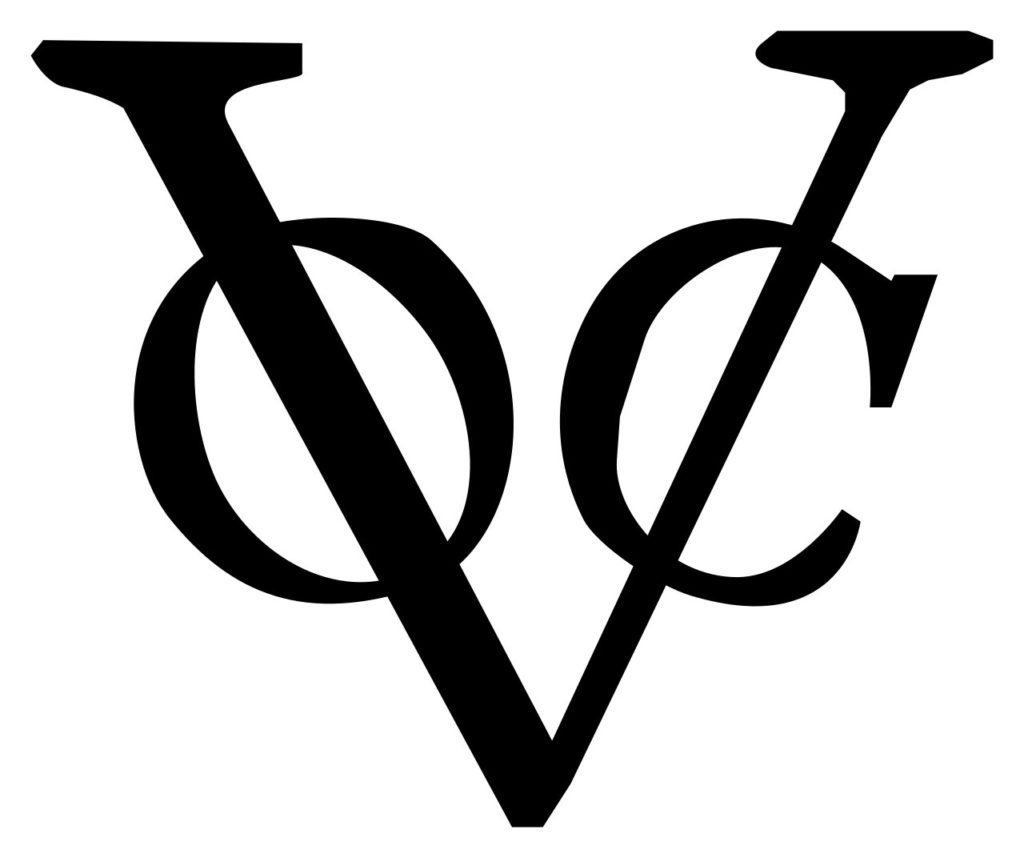
I learned this today. The Dutch East India Company was nationalized in 1796 and dissolved on 31st December 1799. All of its assets were taken by the Dutch government and all of its territories became Dutch colonies.
The Dutch East India Company was called the Vereenigde Oost-Indische Compangnie, which is why its logo is VOC. “Vereenigde” means united, and you can probably guess what “Oost”, “Indishce”, and “Compangnie” mean. Dutch and English share the same roots, so a lot of Dutch words are recognizable to an English speaker.
The VOC started in 1595. It began because of a war. In 1566, the Low Countries started to revolt against King Philip II of Spain, who ruled the provinces. In 1581, they declared independence and set up the Dutch Republic. Up until this point, Antwerp had been the major distribution center for spices and other items coming in from the Far East. After the revolt, that distribution center moved to Hamburg, cutting the Dutch out. Most of the trade with the Far East was being conducted by Portugal, but they weren’t able to meet demand. Then, in 1580, Portugal joined with Spain, and the Dutch Republic decided to enter the spice trade for themselves.
The first expedition went out to Java in 1595. Half the crew died, but they brought back enough spice to make a considerable profit. More expeditions headed out towards the end of the century and the profits were large.
At the time, expeditions were funded on a voyage-by-voyage basis. Money would be raised, the ship would bring spice back to Amsterdam, the spice would be sold, and the money would be repaid plus profit. This was all well and good so long as the boat made a profit. If the boat sank, or the price of spice fell, the investors would lose. In 1600, the English East India Company was formed to control the price of spice, making sure it remained favorable, and to gain a monopoly over trade. In 1602, the Dutch East India Company was formed to do the same, but with one small improvement: They began to sell shares in the company. In August 1602, the world’s first shares were sold to members of the general public. The English East India Company was supported by its own merchants’ investments. The invention of shares meant that anybody could invest in the VOC and share in its profits, as well as balance out its risks. They lowered the risk by inventing limited liability. Without this people would have been loath to invest in a company where the collapse of the company could have bankrupted every single investor. This would lead to the creation of the world’s first stock market in Amsterdam and would make Amsterdam the financial center of the world for about 200 years.
The VOC went from strength to strength. By 1730, it employed 70,000 people across the world. It had a fleet of 150 merchant ships, a private army of 10,000 soldiers, and trading posts in almost every Asian country. It was the only corporation that was able to trade with Japan. It was also pretty ruthless. It transported 50,000 slaves from Africa, colonized countries, mistreated employees and fought wars. (Don’t forget, the colonies at this time belonged to the VOC, not the Dutch government.) In this, it is no different to any other European colonizing power. It was not a good time.
From 1730, the VOC starts to decline until it is nationalized and shut down. What happened? Well, a number of things.
There were a lot of political changes in Asia that the VOC could do nothing about. They lost control and the ability to trade in many places. They ended up only being able to trade in the countries that were their colonies.
The management organization had levels of corruption that couldn’t be ignored, and the inhumane treatment of employees became legendary. The mortality rate of employees was high enough that they sometimes had trouble finding sailors for their ships.
Their financial system was skewed. Because they sold shares in their company and wanted to keep investment coming, they paid out high dividends. A more sensible option would have been to issue more shares, but they didn’t do that. In every decade except for 1710 to 1720, they paid out more dividends than they had available funds. This was a fine system, so long as the same amount of profit could be relied upon. When prices fell and the profit fell, the VOC had to start borrowing from banks.
The source of trade gradually shifted from Asia to South America. Sugar, especially, imported from South America was far cheaper than sugar from Indonesia. This hit the profits of the VOC drastically and they had to borrow even more money.
Despite this, the company still had enough assets to cover its loans and the management were working out how to reform the company. Things would have been looking up if it hadn’t been for the fourth Anglo-Dutch war between 1780 and 1784. The VOC was responsible for defending its colonies against attack. The British captured VOC ships, took money, goods, and killed many of their soldiers. The war wiped out all of the VOC’s capital. Their talks of reform were no longer possible, and they couldn’t borrow any more money. The company was basically bankrupt. The company was nationalized to protect it in 1796 and its charter was allowed to lapse on 31st December 1799. All remaining assets became government property, and the colonies became Dutch colonies. The company had lasted for almost 300 years. And this is what I learned today.
Image By Unknown author (vector graphics by Habitator terrae) – http://www.verschoor.com/files/munten/1742-VOCUtrecht-Duit-kz.jpg
, Public Domain, https://commons.wikimedia.org/w/index.php?curid=894578
Sources:
https://en.wikipedia.org/wiki/Dutch_East_India_Company
https://en.wikipedia.org/wiki/Fourth_Anglo-Dutch_War
https://en.wikipedia.org/wiki/East_India_Company
https://en.wikipedia.org/wiki/Dutch_Revolt
https://www.britannica.com/topic/Dutch-East-India-Company
https://www.businessinsider.com/rise-and-fall-of-united-east-india-2013-11
https://museum.wa.gov.au/explore/dirk-hartog/voc-united-dutch-east-india-company

